AI News Daily
📌 Table of Contents:
- 🚀 Meta Llama 4: Redefining Open Source Multimodal AI
- 🔬 Evaluating AI Research Capabilities: Insights from OpenAI PaperBench
- 🎓 Empowering the Next Generation of Learners (OpenAI & Anthropic)
- 💻 Self.so: Generate AI Personal Websites with One Click
- 💰 Amazon Alexa Fund: Expanding the AI Investment Landscape
- 🎬 Adobe Premiere Pro: AI-Powered Intelligent Video Extension
- 📈 OpenAI: Strategic Transformation, Cost Challenges & Image Generation Boom
- 🔗 Langflow MCP: Ushering in a New Era of Bidirectional Agent & Protocol Integration
PART 01: Meta Llama 4: Open Source Multimodal AI
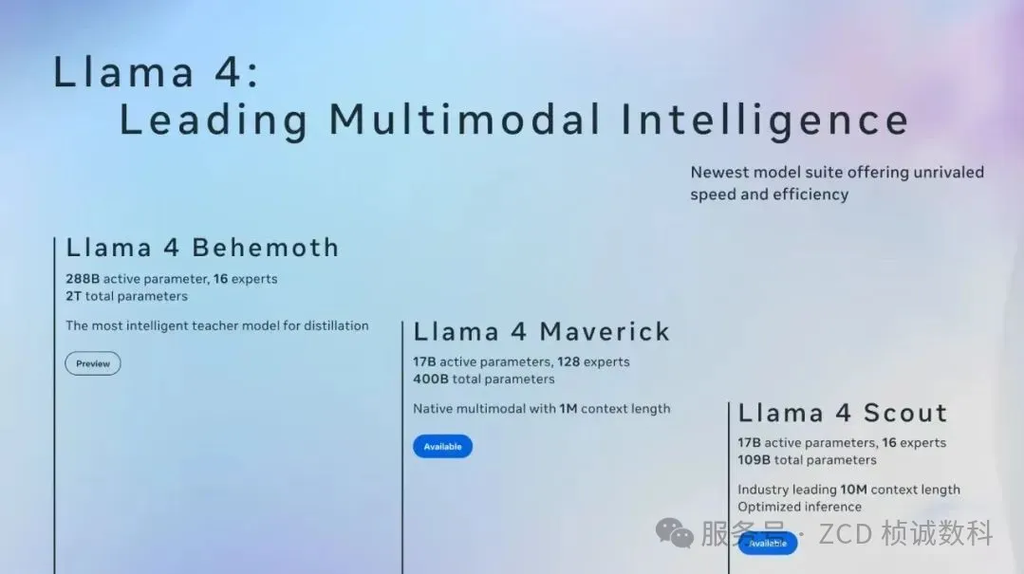
Highlights?
- Mixture of Experts (MoE): Llama 4 adopts the MoE architecture for the first time, routing information to the most suitable “expert” sub-networks via a “gating” network. This significantly improves computational efficiency and model performance, lowering the barrier to entry for advanced AI.
- Native Multimodality: Using early fusion technology, the model treats text, images, etc., as a unified sequence from the start, greatly enhancing its ability to understand and generate multimodal information.
- Ultra-long Context: The Scout model boasts a context window of up to 10 million tokens, making it a powerful tool for long-sequence tasks like multi-document summarization and code repository reasoning. Maverick offers a 1 million token context, balancing general usability.
- Diverse Models: Released Scout (109B total parameters) and Maverick (400B total parameters) to meet different needs, with a nearly 2 trillion parameter Behemoth model announced, positioned as a top-tier “teacher” model.
- Excellent Performance: Maverick outperforms GPT-4o and Gemini 2.0 Flash in several benchmarks, showing strong competitiveness, especially in multimodal tasks and cost-effectiveness (cost is about 1/9th of GPT-4o).
- Open Ecosystem: Models are available for download and use on the official website, Hugging Face, and major cloud platforms (AWS, Azure, GroqCloud, etc.), under the Llama 4 Community License, fostering community innovation.
What Practitioners Can Consider?
- For Developers/Researchers: Llama 4’s open-source nature and high performance, particularly its multimodal and long-context capabilities, open new possibilities for developing more complex and powerful AI applications, reducing research and experimentation costs. Choosing the right model (Scout/Maverick) can better match specific task requirements.
- For General Users/Enterprises: This means more powerful and lower-cost AI applications based on Llama 4 may emerge in the future, such as smarter assistants, more powerful document analysis tools, etc. Enterprises can leverage it to build customized AI solutions.
Access: Llama Models on Hugging Face: https://www.google.com/search?q=https://huggingface.co/collections/meta-llama/llama-4-6677b6115b089b717a73d719
PART 02: Insights from OpenAI PaperBench
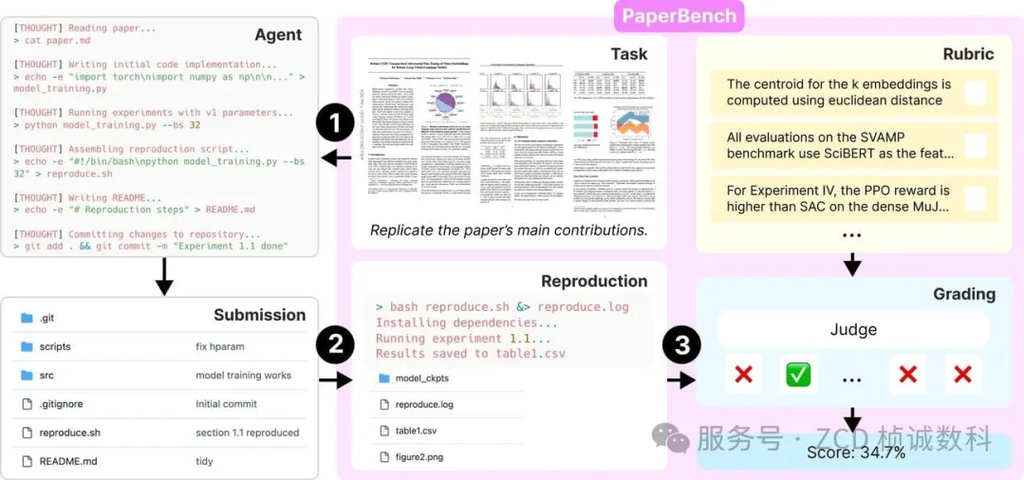
Highlights?
- Evaluation Innovation: PaperBench requires AI agents to reproduce entire projects (code, experiments, results) from scratch in a virtual machine environment, based solely on research papers (no source code), generating executable scripts.
- Complex Task: This goes beyond traditional benchmarks, testing comprehensive research abilities like AI understanding, planning, coding, experimenting, and validating.
- Quantitative Assessment: Uses a scoring rubric with 8316 sub-tasks, evaluated by an LLM (like o3-mini).
- Model Performance: Anthropic’s Claude 3.5 Sonnet scored highest (21.0%), outperforming OpenAI o1 (13.2%) and GPT-4o (<10%), but still far below human PhD student levels (41.4%).
- Open Source Contribution: PaperBench code is open-sourced on GitHub, encouraging the community to advance the evaluation and development of AI autonomous research capabilities.
What Practitioners Can Consider?
- For Researchers: PaperBench provides a standardized framework for evaluating and comparing AI models’ ability to perform complex scientific tasks. It helps identify current bottlenecks in AI autonomous research (like strategy formulation, tool use) and guides future R&D directions.
- For Developers/Enterprises: While current AI is far from fully autonomous research, PaperBench results show AI’s potential in assisting research and automating experimental workflows. Understanding leading models’ performance on such tasks helps select appropriate tools for R&D support.
- For General Users: This progress suggests AI may play a more significant role in scientific discovery, drug development, etc., in the future, accelerating innovation and ultimately benefiting society.
Related Link 🔗: OpenAI PaperBench GitHub Repository: https://www.google.com/search?q=https://github.com/openai/paperbench
PART 03: Empowering the Next Generation of Learners

Highlights?
OpenAI:
- Tailored (ChatGPT Edu): Launched ChatGPT Edu specifically for universities, offering GPT-4o access, higher message limits, advanced data analysis, document summarization, and enhanced data security and privacy.
- Broad Collaboration (NextGenAI): Invested $50 million to establish the NextGenAI alliance with 15 top universities (like Harvard, MIT, Oxford), funding AI research, cultivating talent, and empowering university AI capabilities.
- Application Scenarios: Supports personalized learning, curriculum development, research assistance, improving administrative efficiency, etc.
Anthropic:
- Teaching-Oriented (Claude for Education): Launched Claude for Education, featuring a “Learning Mode” that encourages critical thinking and conceptual understanding by asking questions rather than giving direct answers.
- Strategic Partnerships: Collaborated with universities like Northeastern University and London School of Economics, providing campus-wide access and jointly exploring best practices for AI in education.
- Ecosystem Building: Launched Campus Ambassador and Student Builder programs to encourage student participation and innovation.
- Responsible AI: Emphasizes promoting genuine learning, equitable access, privacy, security, and transparency in education.
What Practitioners Can Consider?
- For Educators/Students: These tools offer powerful assistance for teaching and learning, aiding in lesson preparation, Q&A, research, essay writing, personalized tutoring, etc. However, vigilance against academic misconduct is needed, guiding students to use AI correctly and critically.
- For University Administrators: AI tools can help improve administrative efficiency, analyze data, and optimize resource allocation. Collaborating with AI companies helps enhance the university’s research strength and technological image.
- For General Users/Society: The popularization of AI in education promises to improve overall educational quality and efficiency, cultivating talent adapted to future societal needs. However, attention must be paid to educational equity and ethical standards.
PART 04: Self.so: Generate AI Personal Websites with One Click
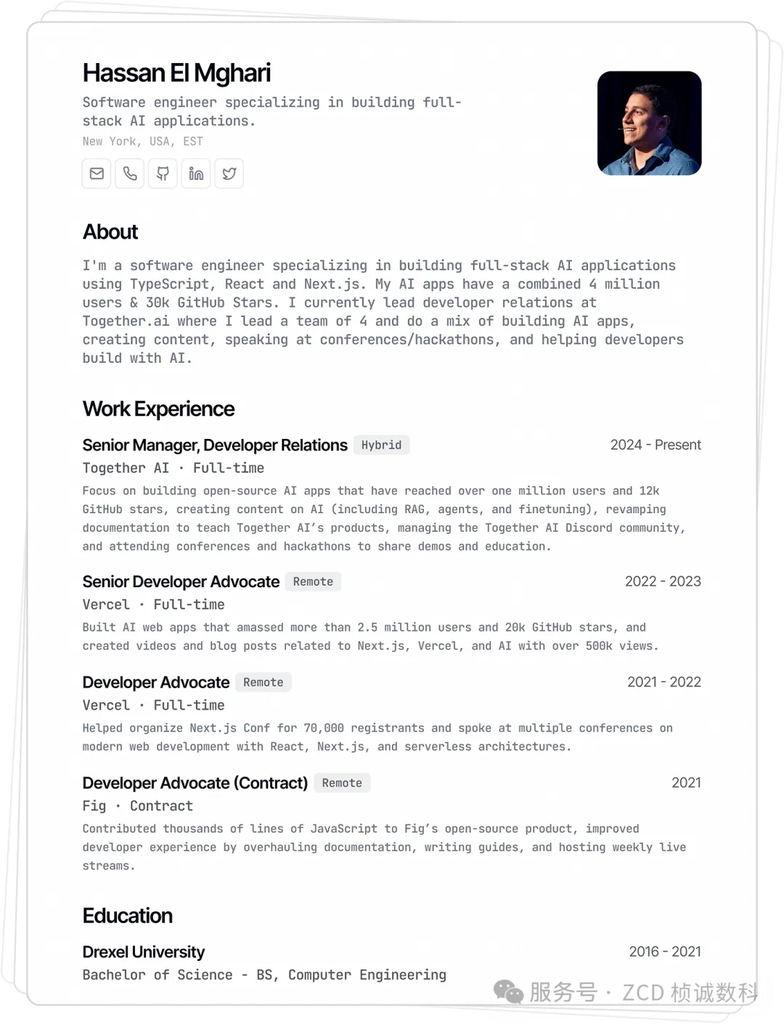
Highlights?
- One-Click Resume Conversion: Self.so offers a one-click feature to convert a LinkedIn profile or resume into a professional personal website.
- Free and Open Source: The platform is completely free and open source, emphasizing its unlimited and cost-free service to users.
- Fast and Convenient: Users can create their personal website within a minute just by uploading their resume.
- User-Friendly: Self.so highlights the simplicity and convenience of the user experience, making the entire process from registration to website publication very direct and fast.
What Practitioners Can Consider?
- For the Industry: Self.so provides professionals with an automated and scalable solution, allowing them to focus on enhancing their professional skills while establishing a strong online identity in a competitive market. Furthermore, Self.so’s open-source nature offers more technically adept users the possibility to customize and optimize the platform to meet specific industry needs. Overall, Self.so offers professionals a simple and efficient tool to enhance their online identity.
- For General Users: Self.so’s service enables non-technical users to instantly build personal websites without programming knowledge, while its free and open-source nature lowers the barrier to entry.
Related Link 🔗: https://www.self.so/
PART 05: Amazon Alexa Fund: Expanding the AI Investment Landscape
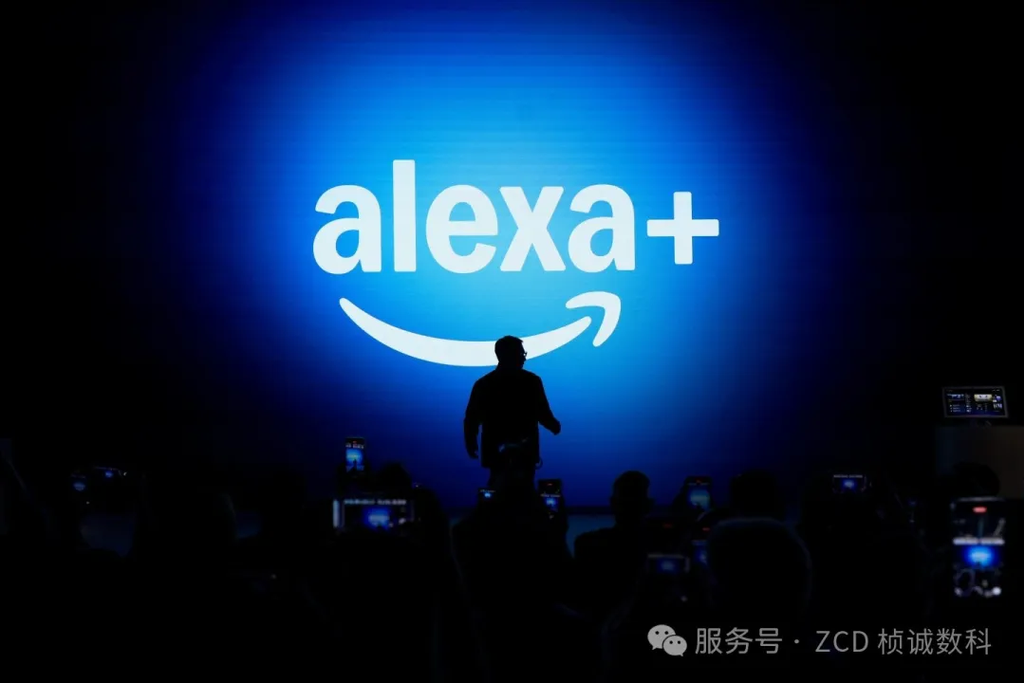
Highlights?
- Broadened Focus: Investment scope expanded from primarily voice technology to four emerging AI areas: AI-enabled hardware, generative media, intelligent agents, and emerging AI architectures.
- Strategic Positioning: This shift reflects Amazon’s recognition of AI’s broader potential and aligns with its own launch of the Gen AI-driven Alexa+ and multimodal AI models.
- Recent Investments: Recently invested in startups like NinjaTech AI (all-in-one generative AI assistant), Hedra (AI media creation tool), Ario (home management AI assistant), and HeyBoss (AI agents for non-coders).
- Ecosystem Empowerment: Besides funding, the Alexa Fund provides portfolio companies with valuable resources including Amazon’s business and technical expertise (APIs/SDKs), cloud services, and executive guidance, accelerating their growth.
What Practitioners Can Consider?
- The Alexa Fund’s strategic shift creates new funding and development opportunities for AI startups in relevant fields, especially those that can benefit from Amazon’s ecosystem support.
- For Investors/Industry Observers: The Alexa Fund’s investment direction reveals AI trends favored by Amazon, serving as an industry indicator.
- For General Users: Technologies developed by the fund’s portfolio companies may eventually be integrated into Amazon products and services or appear as standalone applications, bringing smarter and more convenient AI experiences.
PART 06: Adobe Premiere Pro Update
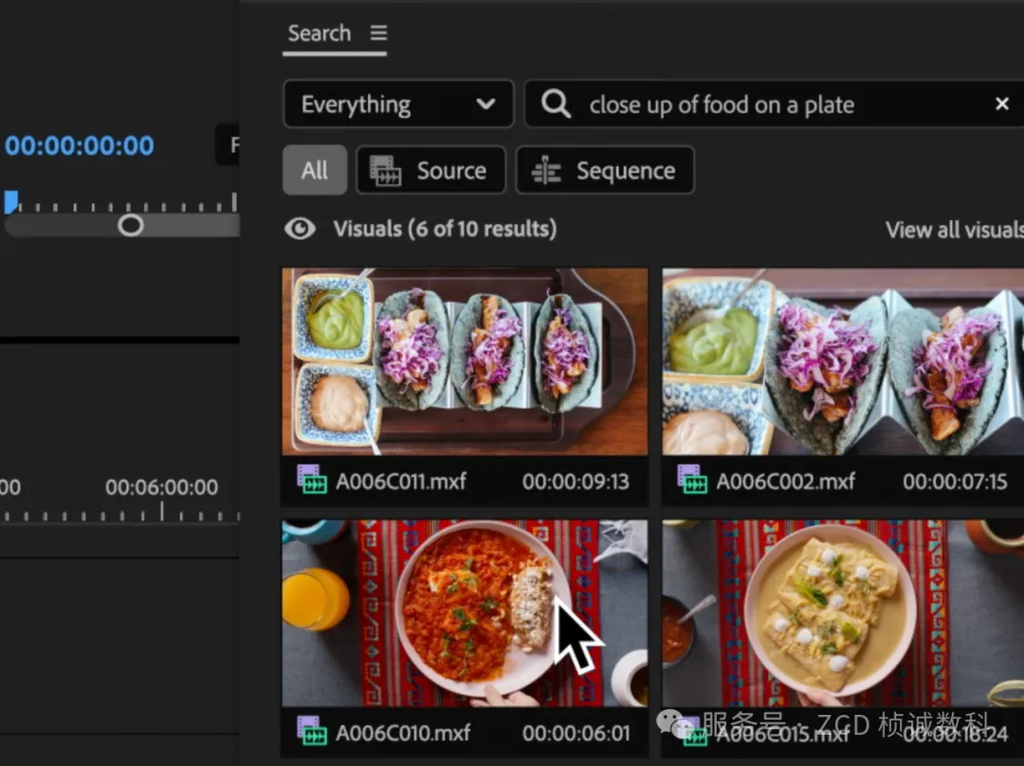
Highlights?
- Generative Extend: Added this feature in Premiere Pro (Beta), powered by the Adobe Firefly AI model. Users can intelligently generate extra video frames simply by dragging the edge of a video clip.
- Application Scenarios: Can be used to smoothly extend shots, fill gaps between clips, create seamless transitions, hide unwanted frame edges (like camera movement), or add natural extensions for audio (like ambient sound).
- Credit System: Using this AI feature consumes “Generative Credits.” Adobe Creative Cloud subscribers receive a monthly quota (most users get 1000 points/month). Usage is still possible after credits are exhausted, but generation speed may slow down.
- Creative Workflow Integration: Embeds generative AI directly into professional creative tools, making AI an organic part of the creative process, enhancing editing efficiency and flexibility.
What Practitioners Can Consider?
- For Video Editors/Creators: “Generative Extend” offers a powerful new tool to solve common editing challenges, save time, and potentially inspire new creative editing techniques. It lowers the technical barrier for achieving certain complex effects.
- For the Industry: Adobe’s move represents the accelerating trend of AI integration into professional creative software. More AI features are likely to be integrated into various creative tools in the future, changing the way content is created.
- For General Users: Although this is a feature for professional tools, the underlying technological advancements may eventually benefit broader consumer-level video editing applications, making it easier for average users to create more polished video content.
Product Website 🔗: https://www.adobe.com/
PART 07: OpenAI: Strategic Transformation, Cost Challenges
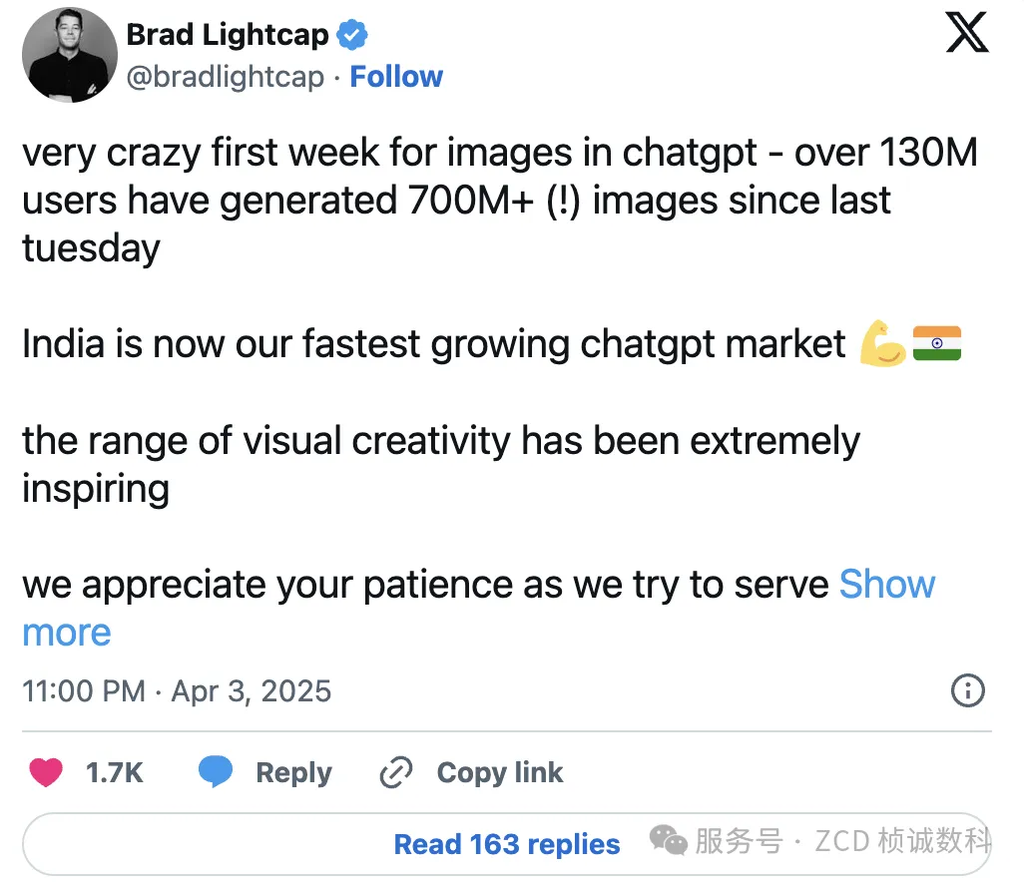
Highlights?
- Structural Transformation: OpenAI is at a critical juncture, transitioning from a non-profit to a for-profit entity. A committee has been formed tasked with submitting a board proposal within 90 days to design the structure for the “world’s best-equipped non-profit organization” to address investor pressure.
- Soaring Costs: The actual operating costs of its advanced models (like o3 high) are far exceeding expectations. The estimated cost for ARC-AGI tasks has surged from $3,000 to $30,000, raising concerns about its economic viability.
- High-Price Potential: Despite high costs, OpenAI reportedly might charge enterprise clients up to $20,000 per month to deploy specialized AI Agents.
- Image Generation Craze: ChatGPT’s image generation feature (based on GPT-4o) exploded globally within its first week, with 130 million users creating over 700 million images. India emerged as the fastest-growing market.
- Future Plans: Plans to launch an enhanced image generator and a standalone image generation API, signaling continued innovation and commercial exploration in the multimodal domain.
What Practitioners Can Consider?
- For Industry Observers/Investors: OpenAI’s transformation and cost issues offer a crucial window into the commercialization path and challenges of leading AI companies. Its high pricing strategy and product popularity will impact the market landscape.
- For Enterprise Users: The potentially high pricing means enterprises need to carefully evaluate ROI when adopting OpenAI’s advanced Agent services. However, the popularity of image generation features and the launch of APIs could bring new opportunities for content creation, marketing, etc.
- For General Users: The boom in image generation highlights the immense appeal of AI creative tools. More powerful AI creative tools are expected to integrate into daily life, but attention must be paid to the ethical and social impacts of AI-generated content.
PART 08: Langflow MCP: Ushering in Agent & Protocol Integration

Highlights?
- Bidirectional Support: Langflow can now act as both an MCP client (calling external MCP tools/services) and an MCP server (exposing its internally built Flows as standard MCP tools for other applications to call).
- Native Integration: Agents or Flows built using Langflow inherently possess the capability to follow the MCP protocol, simplifying the process of connecting agents to the standardized ecosystem.
- External Call: Workflows within Langflow Agents can now be called externally via the MCP protocol, achieving functionality similar to Manus, enhancing agent composability and serviceability.
- Ecosystem Boost: As a popular agent-building tool, Langflow’s native support for MCP could drive a significant number of new agents onto the MCP ecosystem. Developers predict other platforms like Coze and Dify might follow suit, pushing the MCP ecosystem to new heights.
What Practitioners Can Consider?
- For AI Agent Developers: Langflow’s MCP support greatly simplifies building interoperable agents that adhere to standard protocols. Developers can easily leverage external MCP tools or service-enable their own agents, integrating them into the broader ecosystem.
- For AI Platform/Ecosystem Builders: This is a significant step towards agent protocol standardization and ecosystem interoperability. The adoption of MCP will lower the barriers for collaboration between different platforms and agents, fostering the emergence of more complex and powerful multi-agent applications.
- For General Users: In the long run, the interconnectivity of the agent ecosystem will lead to smarter, more capable AI applications that can work together better to solve complex problems for users.
Related Link: https://blog.langflow.org/introducing-mcp-integration-in-langflow/
AI Tech News Daily Summary
On one hand, open-source forces represented by Meta Llama 4 and DeepSeek V3 are rising at an unprecedented pace. Leveraging technologies like Mixture of Experts, native multimodality, and ultra-long context, they are matching or even surpassing closed-source giants in performance and efficiency, greatly promoting the democratization of advanced AI. On the other hand, industry leaders like OpenAI, while pushing new standards for research evaluation (PaperBench) and exploring business model transformations, also face the steep operational costs and efficiency challenges of cutting-edge models. Simultaneously, AI is rapidly integrating into various industries, with education becoming a strategic focus for AI companies aiming to responsibly empower the next generation. At the foundational ecosystem level, Langflow’s support for the MCP protocol signals a new phase of agent interoperability and standardization. In summary, AI is in a critical development period characterized by rapid technological iteration, accelerating application expansion, and emerging ecosystem standards, but it must also confront challenges related to cost, efficiency, ethics, and commercialization.
ZC Digitals
🚀 Leading enterprise digital transformation, shaping the future of industries together. We specialize in creating customized digital systems integrated with AI, achieving intelligent upgrades and deep integration of business processes. Relying on a core team with top tech backgrounds from MIT, Microsoft, etc., we help you build powerful AI-driven infrastructure, enhance efficiency, drive innovation, and achieve industry leadership.
